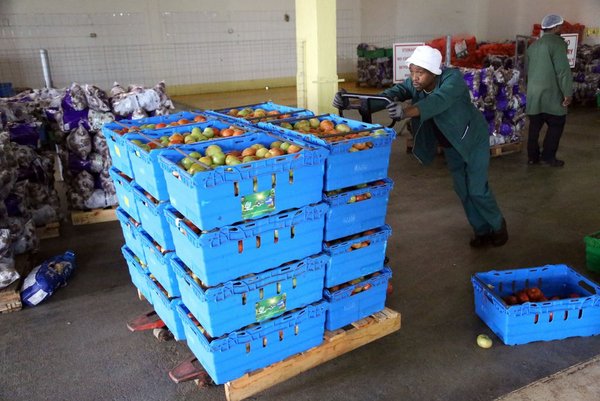- Share this article
- Subscribe to our newsletter
Post-harvest technologies need proper management
In the context of the upcoming trade fair AgroTech Ethiopia, which takes place in Addis Ababa from 9- 11 May 2019, the DLG has published a factsheet on post-harvest technologies.
Post-harvest technologies are to be presented in a special exhibition area of AgroTech Ethiopia. To provide interested visitors with information, the Competence Center Agriculture of the German Agriculture Society (DLG), in cooperation with Deutsche Gesellschaft für Internationale Zusammenarbeit (GIZ), has developed a paper that points out some relevant technical and management measures to reduce food losses especially in developing countries.
Food losses are still a major concern for farmers, wholesalers, merchants, food processors, transporters and consumers. Everybody plays a role, be it in preventing food loss or in suffering from them. Indeed, this is not a new phenomenon, and many initiatives have been started towards reducing these losses in order to provide more food for human consumption without using any additional acreage, increase food security, save disposal costs, make farming more profitable and consequently more attractive to young people as well as help create more jobs at various levels (technicians, trade, processing).
A range of technological options and management tools are available to help individuals. Every single actor along food value chains can contribute his or her share in reducing food losses. For this purpose, the factsheet provides examples of how to operate storage systems and a check-list for individual use.
Transportation bins – sizing and cleanliness
The most appropriate transportation bin from the field to the farm gate might be an issue. It is advisable to choose small-sized boxes for perishable foods (e.g. bins for tomatoes not weighing more than 10 kg). Crops with sensitive skin, such as potatoes or cassava, should be harvested and transported carefully. Any partial damage of the skin is potentially an entry point for fungal attacks or can accelerate rotting processes. Aflatoxins, mycotoxins and other fungal attacks are widespread threats in many countries, particularly in warm and humid climate conditions. As soon as produce is affected at any point, there is a high risk transferring fungi into following stages. In general, reducing the produce´s moisture as quickly as possible is essential.
Sorting and grading
Whether or not farmers are able to sell graded products, sorting out non-storable parts of the yield is a different story. The earlier non-storable parts of the yield are sorted out, the better the quality of the marketed commodity, and the better a farmer’s reputation. Farmers targeting export markets have to meet high phytosanitation standards. The sorted-out crops are not storable, but may be used as raw material for new products (e.g. dried tomatoes, jam or fruit juice). This can help families generate additional income.
Storage hygiene
In general, storage rooms have to be clean, both for short-term and long-term storage. Particularly after a longer period of storage or when contamination has been detected, disinfection might be necessary. Stored produce should not have contact with the storeroom´s ground soil, first to ensure proper ventilation and second to keep rodents away. The use of tin-collared poles is a simple means to detain rodents and thus avoid contamination with excretions such as faeces, urine and saliva. Moreover, preventive measures against birds, bats and cats have to be applied. One generally relevant principle is to store produce in portions, e.g. potatoes can be filled into stockpiled boxes. Air can circulate much better in between the boxes, which supports an evenly controlled climate in the storerooms.
Furthermore, measuring instruments are available to check the presence of pests. In vermin are identified, this calls for action. The level of attack defines the measure required (compare principles of integrated pest management), which could vary from removing affected parts of the produce (this is one advantage of storing in portions) to applying agents of chemical or organic treatment.
In summary, regular monitoring of storage rooms and the stored produce are essential to identify attacks at an early stage in order to take the right action at the right time and use adequate materials; this is what management is all about.
(DLG/db)
Contact:Thomas König, EZ-Scout of the Deutsche Gesellschaft für Internationale Zusammenarbeit (GIZ) GmbH on behalf of the German Federal Ministry for Economic Cooperation and Development (BMZ) seconded to the German Agricultural Society (DLG e.V.)
More information:
Link to DLG article
Download the full pdf of the factsheet (in English)
Website of AgroTech Ethiopia
EZ-Scouts of the German Federal Ministry for Economic Cooperation and Development





Add a comment
Be the First to Comment